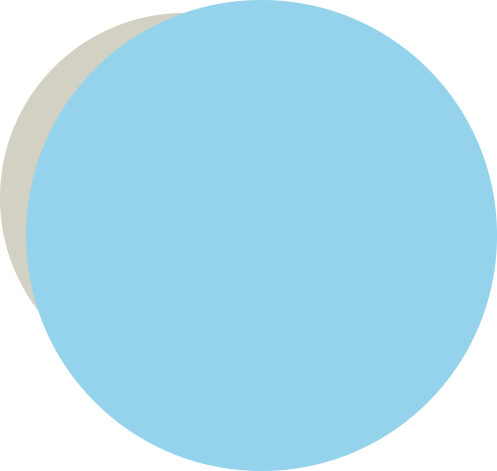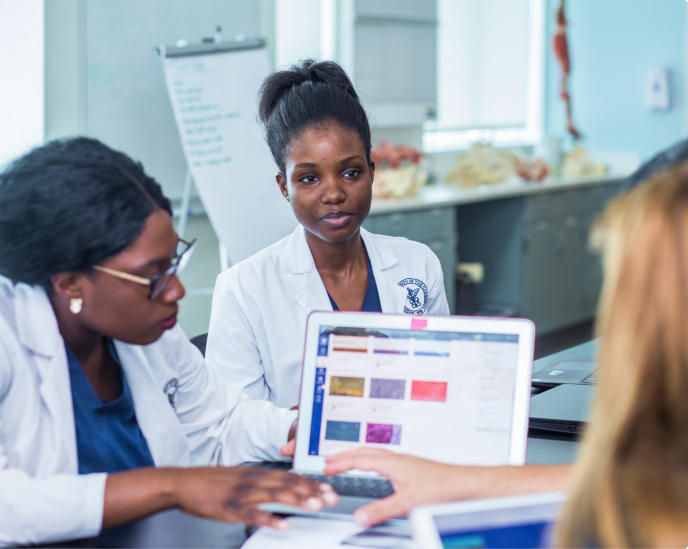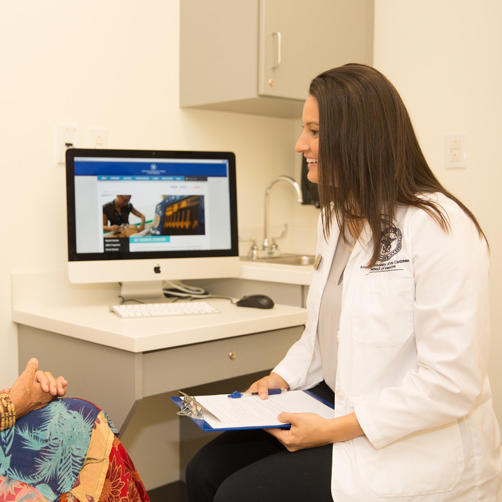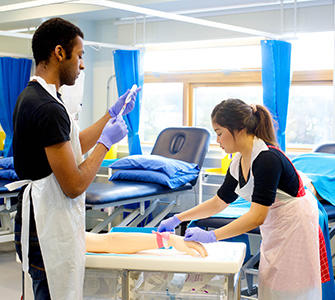Of the many questions students face before entering medical school, the primary one might be: Do I want a Doctor of Medicine (MD) degree or a Doctor of Osteopathy (DO) degree? Both degrees qualify people to practice medicine, but the degrees follow different paths of medical school training. MD’s graduate from allopathic medical schools, while DO’s attend osteopathic medical schools.
Allopathic schools teach traditional, or “Western,” medicine, which treats symptoms and diseases using drugs, radiation, or surgery. Osteopathic schools also teach these treatments, but they add extensive training in hands-on diagnosis and treatment. Osteopathic medicine aims to heal the whole body—rather than a specific part—to fight a disease, and DO’s may prioritize physical therapy or manipulation over the use of medication or invasive procedures. Osteopathic methods are considered holistic—even “alternative.”
The MD is a more established and traditional degree than a Doctor of Osteopathy. Most patients assume the doctor they are seeing is an MD—and they are usually right. How common is a DO vs MD degree? Approximately 11 percent of existing doctors in the United States are DO’s, but that number is growing. Right now, one out of four medical students are studying to become DO’s. Many people specifically seek out DO’s for their medical needs, including U.S. President Joe Biden, whose personal physician—Dr. Kevin O’Connor—is a DO.
If you are uncertain which path to take when it comes to choosing between a DO vs MD, consider these questions:
- Do you prefer to practice traditional or osteopathic medicine?
- Do you believe medicine is largely a matter of diagnosis and treatment?
- Do you think medicine is linked to a mind-body-spirit relationship?
- Are you compassionate and believe in a “healing touch?”
- Are you curious about using manipulative medicine to treat illnesses or injuries?
- Are you fascinated by the musculoskeletal system—the muscles and bones and their connecting tendons and ligaments?
HOW IS OSTEOPATHIC MEDICINE DIFFERENT FROM TRADITIONAL MEDICINE?
Osteopathic medicine involves all aspects of traditional medicine and includes various medical specialties. But osteopathic medicine expands on traditional medicine, adding that the musculoskeletal system is key to the successful operation of all other body systems. DO’s use osteopathic manipulative treatment (OMT) of the musculoskeletal system as a diagnostic and treatment tool. (OMT is also called osteopathic manipulative medicine, or OMM.) A hands-on technique, OMT may include pressure, resistance, or stretching to move a patient’s bones, joints, muscles, and tissues. OMT is used to treat such ailments as arthritis, headaches, sports injuries, stress injuries, and pain in the lower back, neck, shoulders, or knees. OMT may also treat hypertension and cardiac, kidney, and respiratory ailments—even COVID-19. Some key tenets of osteopathy are:
- The body is a unit, and a person is a combination of body, mind, and spirit
- The body is capable of self-healing, self-maintenance, and self-regulation
- Structure and function are reciprocally interrelated
WHAT IS THE DIFFERENCE BETWEEN MD AND DO TRAINING?
So exactly what is the difference between MD and DO training? The requirements to enter medical school are nearly identical whether you want to become an MD or DO. Both programs insist on high grade-point averages and high scores on the Medical College Admission Test (MCAT). When considering programs, however, students must be aware that many four-year medical schools—such as American University of the Caribbean School of Medicine (AUC)—only have MD programs.
Choosing to achieve a DO may limit your choices—there are only about 40 accredited colleges of osteopathic medicine in the United States, while there are more than 150 schools with traditional MD programs. If students are unsure which path to take, they should apply to both types of schools to increase their chances of acceptance. Students can then decide which is the better personal fit.
It is important to know what is a DO vs MD’s curriculum is like. Allopathic and osteopathic curriculums are similarly structured, with students spending their first year or two in classes before diving into clinical training. At the AUC School of Medicine and most other MD programs, students spend two years studying medical sciences in the classroom before joining traditional clinical rotations at teaching hospitals.
In a DO program, students learn the same medical science before moving on to hospitals, but osteopathic clinical education adds some 200 hours of musculoskeletal system training. DO training includes osteopathic manipulative treatment (OMT) and such treatments as acupuncture, herbal applications, homeopathy, hypnosis, and relaxation therapies.
After graduation, both MD’s and DO’s must complete a residency, during which physicians usually take the third and final step of the examination for licensure. It is important to note the difference between MD and DO licensing processes. The licensing tests for MD’s and DO’s differ slightly. DO graduates take the Comprehensive Osteopathic Medical Licensing Examination (COMLEX), but they may also take the U.S. Medical Licensing Examination (USMLE). All MD grads take the USMLE. DO’s are certified by the American Osteopathic Association. MD’s may be certified by the American Board of Internal Medicine.
Nearly all medical specializations are available to both MD’s and DO’s, but MD’s are more likely to advance to specialized training. In 2019, the American Medical Association reported that more than half—57 percent—of new DO’s chose to practice primary care specialties, while the number of MD’s choosing primary care is declining—about 30 percent as of 2018. DO vs MD: Which is Better?
When comparing being a DO vs MD, you may be thinking: which is better? Obtaining either a Doctor of Medicine degree or a Doctor of Osteopathy degree gives people one great advantage—they are now physicians! As far as which degree is “better,” that relies completely on the individual. MD’s may have an advantage in that their degree is familiar and instantly understood.
DO’s are less common and because people may not understand what they are, DO’s may have to explain their degree to patients. This lack of understanding may also lead some people to put less trust in a DO vs MD Some doctors, too—both MD’s and DO’s—hold a bias against doctors of the “other breed.” These are simply personal conceptions, however, and in the end, both MD’s and DO’s are highly qualified and capable physicians.
The AUC School of Medicine has a strong history of placing graduating students in internal medicine or specialty residencies. In 2020, 92 percent of AUC graduates earned residencies throughout the United States and Canada. Take the next step on your path to become a physician: apply for admission to AUC.
Related resources:




